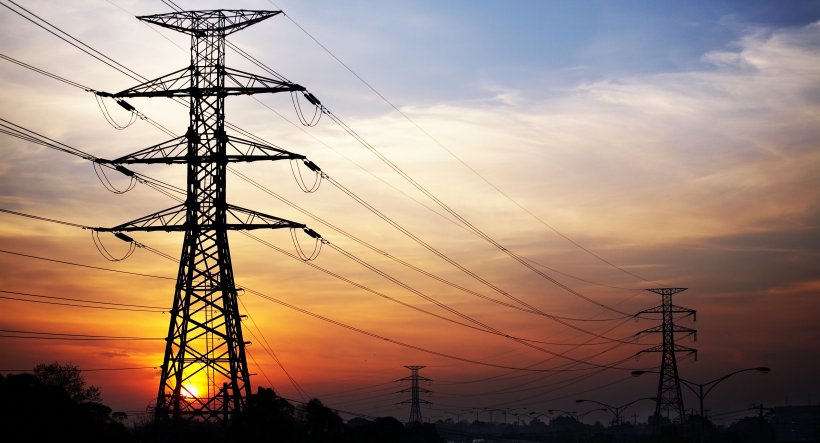Upcoming FERC Rule Opens Historic Opportunity for Systemic Transmission Reform

By Tim Aiken and Bryn Baker
The transmission system is the backbone of the U.S. electricity grid, and increasing transmission capacity nationwide is key in enabling corporate and institutional customers to meet their clean energy goals and expand their operations where and how they would like. Without reforms in how we plan, permit, and pay for new transmission, customers will fall short of their goals, and the nation will lack a modern, clean, affordable, and reliable grid that helps enable innovation and build our economy.
The Federal Energy Regulatory Commission (FERC) in the year ahead has an important opportunity to develop the kind of systemic transmission reforms we need. Pending final action and approval before the commission is a Regional Transmission Planning and Cost Allocation Rule that provides a historic opportunity to remedy past planning rule deficiencies and set this nation on the course to an interconnected and resilient electric grid capable of meeting the demands and challenges for the coming decades.
Current Context
More than 70% of the nation’s transmission and power transformers are over 25 years old and in many cases have exceeded their original design life. Few new major lines are being built, and those in the pipeline average a 10- to 12-year permit approval process before construction can begin.
The gap between our transmission needs and existing capacity continues to grow. Last month, the U.S. Department of Energy’s (DOE’s) National Transmission Needs Study concluded that under a needs assessment forecasting moderate load and high clean energy growth due to the incentives and other provisions in the Inflation Reduction Act (IRA), regional transmission capacity must increase by 64% and interregional transmission must grow by 114% by 2035.
A 2022 analysis by Princeton University’s ZERO Lab found that without doubling the current pace of new transmission capacity, more than 80% of the IRA’s emission reductions would be unrealized. The study also found that without the added reliability benefits of interregional transmission, developing a clean energy grid would be far more expensive for customers.
Congressional action on permitting reform that includes strong reforms to speed transmission development has stalled ahead of an election year in 2024. Congress this past summer enacted a modest set of permitting reforms as part of the Debt Ceiling deal, but the deal’s sole provision on transmission, an up to three-year study on how regions could share electricity during periods of peak demand, does not adequately advance needed reform.
The deal diminished further congressional interest in comprehensive reforms. Democrats worry that the Republican price of altering landmark environmental laws in exchange for transmission reforms is too high, and Republicans worry that new transmission could accelerate the retirement of fossil fuel generation by adding predominantly clean generation. Bipartisan discussions around various transmission-related provisions continue, and the lame duck session after the November 2024 general election offers the next most likely window of opportunity to enact legislative reforms.
Meanwhile, the Energy Department this year began using its authorities under Section 216(h) of the Energy Policy Act to expedite federal reviews for transmission projects. A joint memorandum of understanding across multiple agencies was signed to designate DOE as the lead agency for transmission to streamline the National Environmental Protection Act review process and set enforceable deadlines.
DOE also raced to implement transmission-related provisions in both the IRA and the Bipartisan Infrastructure Law, through more than $20 billion in grants and loans to improve the electric grid. Collectively, these administrative actions will shave years off the federal review process and lower costs. But alone, executive action cannot overcome all the obstacles to planning, permitting, and paying for new transmission.
Opportunity at FERC
FERC now has an important opportunity to make systemic transmission planning and cost allocation reforms. A strong planning rule that requires transmission planning authorities to standardize the process for planning and paying for new transmission could remove the single largest impediment to building new major transmission lines.
In April 2022, FERC released a proposed rule that addresses some aspects needed for transmission reform. However, that rule does not fully solve hurdles in how to pay for regional lines that are needed. These larger lines help reduce customer costs and improve reliability, especially during extreme weather, while also facilitating the integration of clean energy to the grid and its ability to accommodate growing loads.
The proposed draft planning rule would advance holistic transmission planning by requiring public utility transmission providers to develop long-term regional transmission plans that look at least 20 years into the future, and to update those plans every three years. Plans would also have to include multiple scenarios that use different assumptions, including extreme weather, corporate demand for clean energy, and load growth.
Two areas of the proposed planning rule would need to be strengthened to address systemic changes to planning and paying for lines, particularly regional lines, that benefit customers. FERC would need to:
- Require public utility transmission providers to consider a broad set of up to 12 economic and reliability transmission benefits when identifying efficient or cost-effective transmission facilities in the regional transmission planning process. Currently, the list is optional.
- Require utilities to consider Grid Enhancing Technologies that increase grid efficiency and reduce customer costs.
Under the 2-2 divided political party composition of FERC, the commission has not been able to move the planning rule forward. Commissioner James Danly, a Republican, must step down when his term expires at the end of December 2023, leaving a 2-1 commission that could move major rules forward.
CEBA encourages members to engage with us in supporting this FERC rule. The planning rule could advance in early 2024 and provides a significant opportunity to enable the transmission development customers need and to help modernize our grid to meet growing electricity demand and weather stresses on reliability, while providing improved access to low-cost, clean energy.
For more information on how transmission expansion benefits energy customers, read our issue brief.
